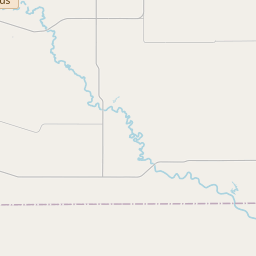St. Paul Lutheran Church and School







ST. PAUL LUTHERAN CHURCH AND SCHOOL
IN DECEMBER 1911, ST. PAUL LUTHERAN CHURCH WAS ORGANIZED BY A SMALL GROUP OF WENDISH LUTHERAN MEN UNDER THE DIRECTION OF REV. E.J. MOEBUS IN THE RURAL COMMUNITY OF CONCORDIA, ABOUT SEVEN MILES NORTHEAST OF BISHOP. JOHANN MICHALK OF THORNDALE (MILAM CO.) DONATED A FIVE ACRE SITE FOR THE CONSTRUCTION OF A CHURCH BUILDING, AND THE STRUCTURE WAS ERECTED BY EARLY 1912. AMONG THE FIRST CONCERNS OF THE NEW CONGREGATION WAS THE RELIGIOUS AND SECULAR EDUCATION OF THEIR CHILDREN. THEREFORE, THE NEW BUILDING WAS USED AS A SCHOOLHOUSE DURING THE WEEK. JOHN G. DUBE DONATED A TWO ACRE SITE NEAR THE CHURCH FOR THE CREATION OF A CEMETERY THAT CONTINUES TO BE USED BY THOSE AFFILIATED WITH THE ST. PAUL CONGREGATION.
ALTHOUGH A FULL-TIME PASTOR (REV. ARTHUR E. MOEBUS, SON OF THE ORGANIZING PASTOR) WAS HIRED IN 1913, THE CHURCH’S PAROCHIAL SCHOOL DID NOT ACQUIRE A FULL-TIME TEACHER UNTIL 1931. ALFRED GEIHSLER SERVED THE SCHOOL FOR OVER FORTY YEARS AS A TEACHER AND PRINCIPAL. A NEW, LARGER CHURCH BUILDING WAS CONSTRUCTED IN 1928, FOLLOWED BY A DEDICATED SCHOOL BUILDING IN 1934.
IN 1960, THE CONGREGATION VOTED TO RELOCATE TO BISHOP; THE NEW CHURCH AND FOUR-ROOM SCHOOL WERE DEDICATED ON SEPTEMBER 20, 1964. THE PARISH HALL, PASTORAGE AND TEACHERAGE WERE MOVED IN FROM THE FORMER CHURCH SITE. SEVERAL ORGANIZATIONS HAVE BEEN FOUNDED WITHIN THE CONGREGATION, INCLUDING THE LUTHERAN WOMEN’S MISSIONARY LEAGUE, THE LUTHERAN LAYMEN’S LEAGUE AND THE WALTHER LEAGUE. TODAY, ST. PAUL LUTHERAN CHURCH AND SCHOOL CONTINUES TO SERVE THE PEOPLE OF THE BISHOP AREA.
175 YEARS OF TEXAS INDEPENDENCE * 1836-2011
As one of the most visible programs of the Texas Historical Commission (THC), historical markers commemorate diverse topics in Texas history, including: the history and architecture of houses, commercial and public buildings, religious congregations, and military sites; events that changed the course of local and state history; and individuals who have made lasting contributions to the state, community organizations, and businesses.
More history nearby
The first oil well in the United States was drilled in Texas in 1859. The discovery of oil transformed the economy of the state and helped to make Texas one of the wealthiest states in the nation.
In 1828, the Mexican government granted land to Colonel Henry Lawrence Kinney, an American entrepreneur, who founded the trading post of Kinney's Trading Post near the Nueces River. This marked the beginning of Anglo settlement in the area. Nueces County was officially established in 1846, following the Texas Revolution and subsequent annexation of Texas by the United States.
Throughout the 19th century, Nueces County played a significant role in Texas' development. The town of Corpus Christi, which served as the county seat, became an important regional trade center due to its proximity to the Gulf of Mexico. The county flourished as a shipping hub for livestock, cotton, and other agricultural goods.
The county's history was greatly influenced by its participation in several military conflicts. During the American Civil War, Corpus Christi served as a center for Confederate forces, and the county witnessed both Union and Confederate occupation. Additionally, the county played an important role during World War II, with Corpus Christi becoming a major training center for Navy pilots.
In recent times, Nueces County has continued to grow and evolve. The county's economy has diversified, with tourism, oil and gas, and the military being major contributors. The region boasts numerous attractions, including beautiful coastal beaches, cultural sites, and a vibrant culinary scene. Today, Nueces County remains an important and thriving part of Texas' history and economy.
Nueces County Timeline
This timeline provides a condensed summary of the historical journey of Nueces County, Texas.
- 1836 - Nueces County is established as one of the original counties in the Republic of Texas.
- 1845 - Texas becomes a state of the United States, and Nueces County remains part of the state.
- 1848 - The county seat is established in Corpus Christi.
- 1850 - The population of Nueces County reaches 756 residents.
- 1852 - The Corpus Christi Cathedral is constructed, becoming a significant landmark in the county.
- 1872 - The railroad reaches Nueces County, leading to increased economic development and population growth.
- 1875 - The Nueces County Courthouse, built in the Renaissance Revival style, is completed.
- 1900 - A devastating hurricane strikes the county, causing significant damage and loss of life.
- 1914 - The Port of Corpus Christi is established, becoming a major hub for trade and industry.
- 1931 - The Nueces County Courthouse is expanded and remodeled to its current appearance.
- 1940 - Nueces County experiences a population boom, with the county's residents totaling over 101,000.
- 1987 - Hurricane Gilbert causes widespread destruction in Nueces County and the surrounding areas.
- Present - Nueces County continues to be a thriving center for commerce, industry, and tourism.